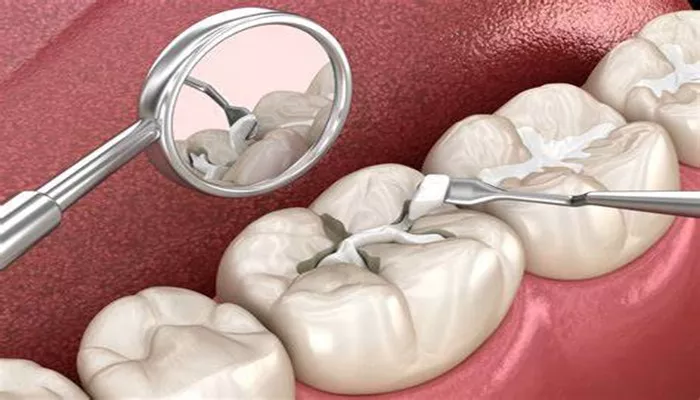Dental fillings are a common procedure used to repair teeth that have been damaged by decay. The process involves removing the decayed part of the tooth and filling the resulting cavity with a suitable material. There are different types of fillings, and the procedure may or may not involve the use of needles, depending on various factors.
The Role of Anesthesia in Dental Fillings
When Anesthesia is Needed
In many cases, anesthesia is required for dental fillings. This is especially true when the decay is deep enough to be close to the nerve of the tooth. If the dentist drills into the tooth without anesthesia in such cases, the patient would experience significant pain. For example, if a cavity has reached the dentin layer, which is closer to the pulp (where the nerve endings are), the patient may feel a sharp pain when the dentist is removing the decayed tissue.
Anesthesia is also necessary when the filling procedure is likely to cause discomfort. This can happen when the cavity is in a sensitive area of the tooth, such as near the gum line or on a large surface area of the tooth.
Types of Anesthesia
Local Anesthesia
Local anesthesia is the most common type used for dental fillings. It numbs the area around the tooth being treated. Local anesthetics are typically injected using a needle. The dentist will first clean the area where the injection will be made. Then, a small – gauge needle is inserted into the gum tissue near the tooth. The anesthetic solution is slowly injected. This numbs the nerve endings in the area, including the tooth itself, the gum, and sometimes a small area of the surrounding tissues. For example, if a patient is having a filling on a molar tooth, the local anesthetic will numb that molar, the adjacent gums, and a bit of the surrounding area so that the patient does not feel any pain during the filling procedure.
There are different types of local anesthetics available, such as lidocaine and articaine. These anesthetics work by blocking the nerve impulses from reaching the brain, so the patient does not perceive pain. The effect usually lasts for a couple of hours, which is sufficient for the dentist to complete the filling procedure.
Topical Anesthesia
In some cases, topical anesthesia may be used before the injection of local anesthesia or in very minor cases of filling. Topical anesthetics are applied as a gel or a liquid directly onto the gum tissue. They numb the surface of the gum slightly, which can reduce the discomfort of the injection of the local anesthetic. However, topical anesthesia alone is usually not enough to completely numb the tooth for a filling procedure, especially if the decay is deep.
Filling Procedures Without Needles
Composite Fillings
Composite fillings are a type of tooth – colored filling material. In some cases, if the decay is very superficial, the dentist may be able to perform the filling without the use of a needle for anesthesia. For example, if the decay is only in the outermost enamel layer of the tooth and is a small area, the dentist may be able to remove the decayed part and place the composite filling without causing significant pain. The enamel has no nerve endings, so as long as the dentist is careful and the patient has a relatively high pain tolerance, it can be done without anesthesia.
However, even in these cases, if the patient is very sensitive or if the dentist anticipates that the procedure may cause some discomfort, they may still choose to use local anesthesia with a needle.
Glass Ionomer Fillings
Glass ionomer fillings are another type of filling material. Similar to composite fillings, in very minor cases of decay, a glass ionomer filling may be placed without the use of a needle for anesthesia. These fillings are often used in areas where aesthetics are not as critical, such as on the back teeth. But again, if there is any concern about the patient experiencing pain, the dentist may opt for local anesthesia with a needle injection.
Considerations for the Use of Needles in Dental Fillings
Patient Comfort
While the use of a needle for anesthesia can cause some anxiety in patients, it is often necessary to ensure their comfort during the filling procedure. Dentists are trained to administer injections in a way that minimizes pain. They may use techniques such as a slow injection rate and a gentle touch. Some dentists also offer distractions, such as music or videos in the treatment room, to help patients relax during the injection process.
For patients with a severe fear of needles, dentists may explore alternative options such as pre – treatment with anti – anxiety medications or using different types of anesthetic delivery systems, but these are not always applicable or sufficient in all cases.
Clinical Necessity
The decision to use a needle for anesthesia ultimately depends on the clinical situation. If the decay is deep or the filling procedure is likely to be painful, the dentist will usually use local anesthesia with a needle injection. This is to ensure that the patient does not experience pain during the treatment, which could lead to problems such as the patient moving suddenly during the procedure, which in turn could cause injury to the tooth or the soft tissues in the mouth.
Conclusion
In conclusion, dentists may or may not use needles to fill teeth. It depends on the extent of the decay, the location of the cavity, the patient’s pain tolerance, and the overall clinical situation. While in some cases of very minor decay, fillings can be done without the use of needles, in most cases where the decay is significant or the procedure may cause pain, dentists will use local anesthesia administered with a needle to ensure a pain – free filling procedure.
Related topics:

